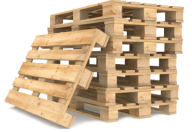Efficient Pallet Storage in Industrial Warehouse and Distribution Space
PallMallPallets storage can be the backbone of a warehouse and industrial unit. How efficiently your pallets are stored and how easy (and quickly) you can access products can often make the difference between profit and loss.
1. Think about the size of your products and pallets to be stored
The first thing to consider when it comes to pallet storage is the size of the products and pallets that you want to store and the most efficient manner in which to store them. This will obviously differ from business to business, depending on the respective needs of your company.
Keep your most popular products closest to the door or loading bay this will help to improve the efficiency of your workforce and speed up processes. Think about overhang and pallet height and try to store similarly-sized items together.
2. Consider the area you have available for storage
Next, it makes sense to think about the area that you have available in which to store your pallets. Dont base the design of your storage area on your lifting equipment instead base it on the overall design and layout of your warehouse.
3. Think about how youd retrieve your pallets
How you retrieve your pallets will depend on the type of equipment that you plan on using in your warehouse space.
To an extent, the limits of your space will define what type of lifting equipment you choose to access and retrieve your products. Think carefully about the demands and limitations of your space such as minimum and maximum access sizes.
At Pall Mall offer a variety of industrial, warehouse and distribution units for lease across the country. Discover more about our available units by giving us a call on 020 8108 3511 or by sending us an email. We hope to hear from you soon.
—
Pall Mall Estates have a wide range of low cost commercial properties across the UK.
Take a look at our available spaces here or get in touch with our experienced team here.







